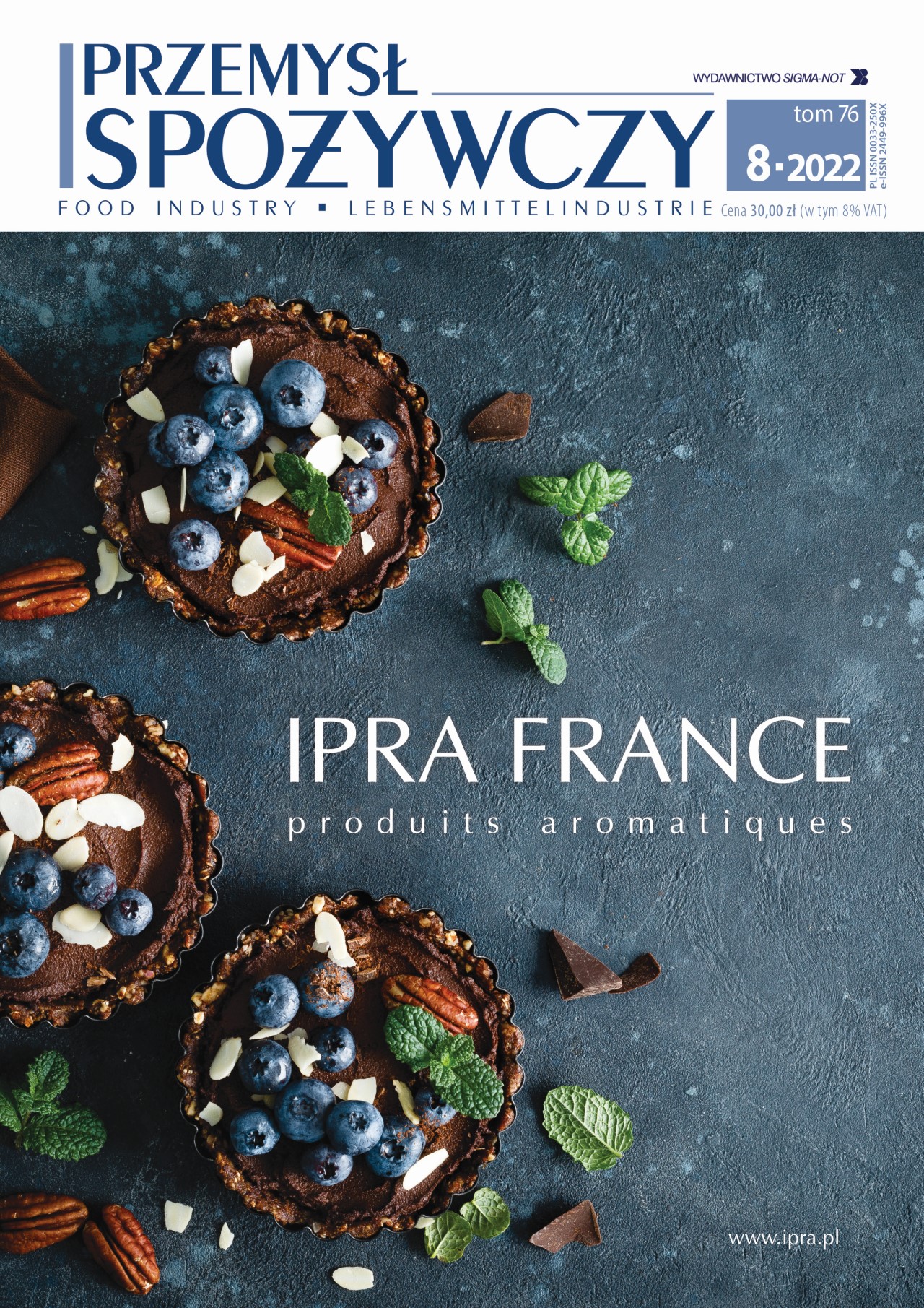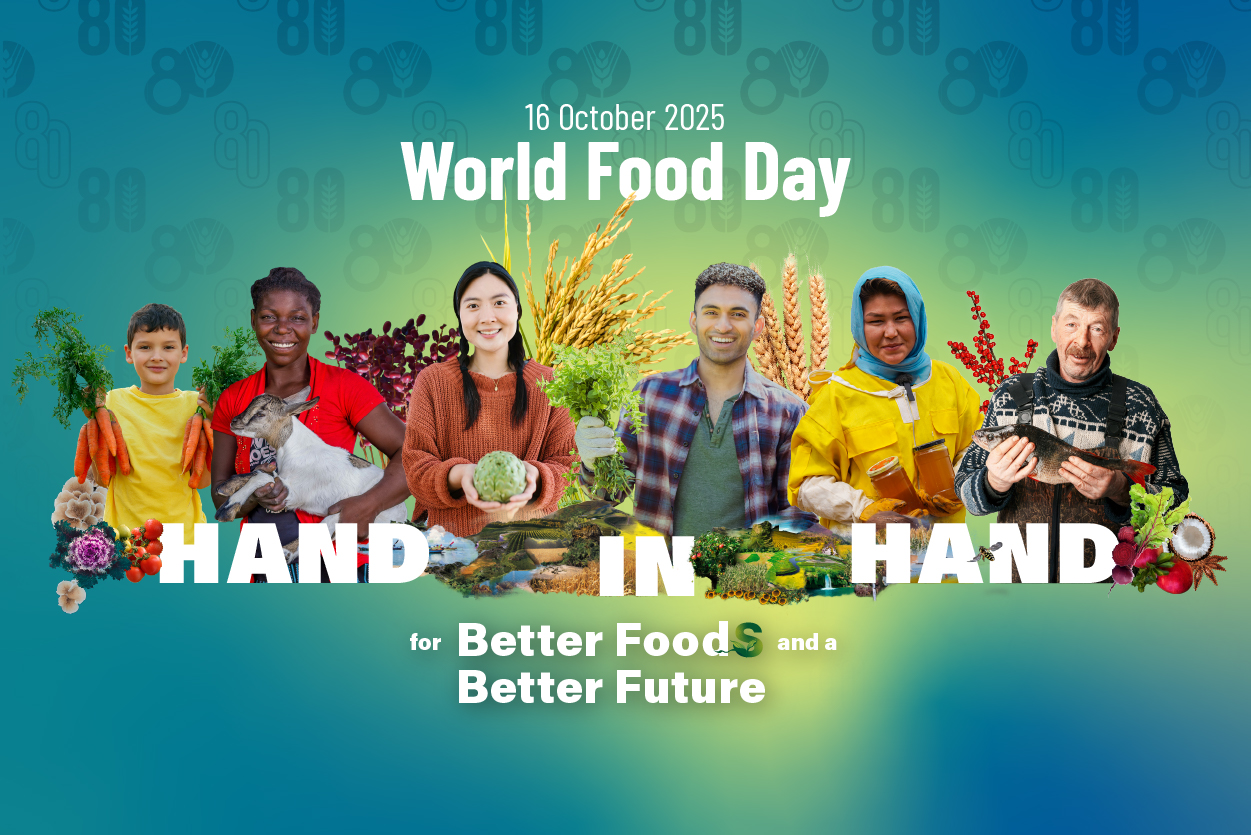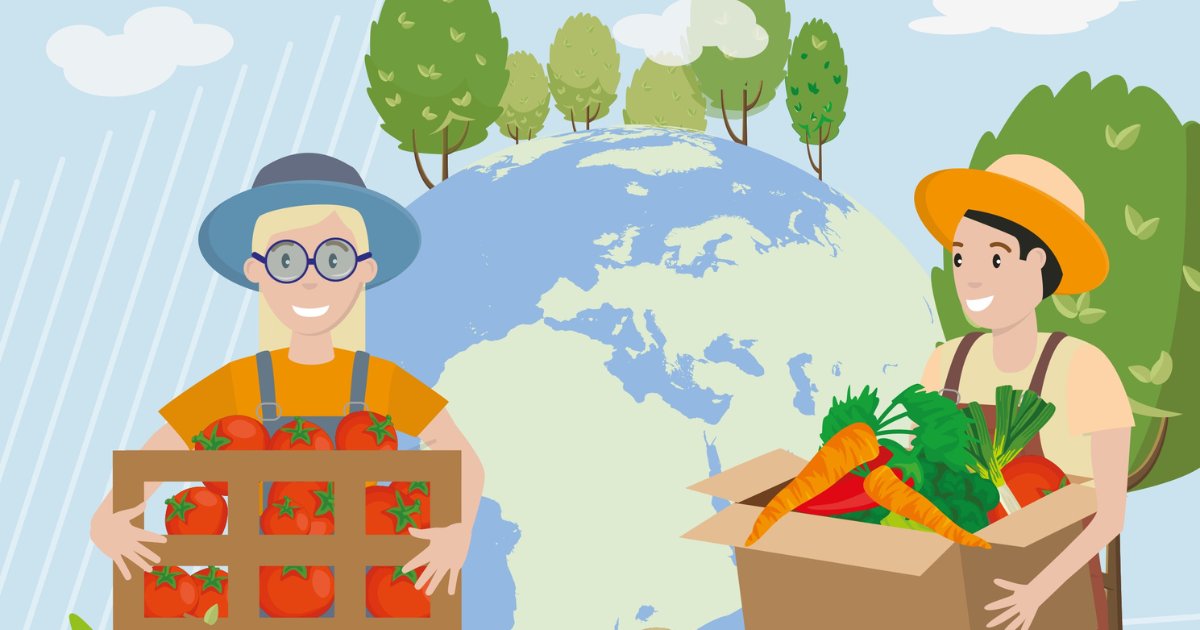ECONOMY
- Importance Of Domestic and Imported Raw Materials in Food Production in Poland (DOI10.15199/65.2022.8.1)
Iwona Szczepaniak, Piotr Szajner 6
The production of food products in Poland shows high dynamics of development. The raw material base consists mainly of products from domestic agriculture. The progressing internationalization processes of the Polish food economy mean that the importance of imported agricultural raw materials is gradually increasing. During the period of Poland’s membership in the European Union, the share of imported products in the total raw material resources of the food sector increased, depending on the calculation method used, to approx. 33-39%. These products are mainly raw materials from other climatic zones. Particular sectors of the domestic food industry use different strategies in the field of raw material supply, which results from various conditions of their functioning, including a different ownership structure.
KEY WORDS: raw materials, import, agriculture, food production
- Food Industry in Poland in The Face of The Pandemic COVID-19 And War in Ukraine (DOI10.15199/65.2022.8.2)
Jadwiga Drożdż, Robert Mroczek 14
The year 2020 was under the pressure of the spreading COVID-19 pandemic and the fight against it, practically in all areas of socio-economic life. The value of sold production of the food industry (food products, beverages and tobacco products), retail sales of food, beverages and tobacco products as well as consumption in the household sector decreased from 1.5% to 3.0%. Poland’s GDP decreased by 2.2%, but the export of agri-food products increased in value to EUR 34.3 billion and was 7% higher than in 2019. In 2021 the increase resulted in a growth in production costs. Inflation also started to rise, but the real increase in average wages in the economy was 3.0 percentage points higher than it. GDP in Poland increased by 5.9%, retail sales of food, sales of the food industry and consumption in households increased from 1.9% to 6.1%, and exports of agri-food products by 9%. In the first quarter of 2022, the world markets experienced a shock as a result of the outbreak of the war in Ukraine. The world prices of agricultural commodities and the prices of energy carriers have increased significantly. Inflation accelerated in Poland, in June this year it reached 15.5%, it means the highest level in 25 years. The Monetary Policy Council began to raise interest rates from October 2021 to 6.5%. High prices of agricultural commodities will increase prices at the level of processing and retail trade, which with lower purchasing power of consumers (decrease in the real value of income), will reduce the demand for food, but the share of food expenditure in total expenditure may increase due to its rising prices.
KEY WORDS: food industry, food, beverages, tobacco products, demand, production, profit
TECHNICS-TECHNOLOGY
- Blending As a Way to Modify the Nutritional Value and Oxidative Stability of Cold-Pressed Oils (DOI10.15199/65.2022.8.3)
Karol Łysiak, Michał Wolski, Małgorzata Wroniak 24
Blending is a method of modifying the properties of fat products by combining two or more oils/fats together. The purpose of this study was to determine the effect of blending on the nutritional value and oxidative stability of selected cold-pressed oils (sunflower, hemp, flax and linseed). Based on the study, it was found that blending cold-pressed oils with different fatty acid composition modifies the nutritional value of the blends – by increasing the content of deficient fatty acids and improving nutritional indices (atherogenicity, thrombogenicity, hypocholesterolemic). It has been shown that blending oils rich in acids of the n-3 family, i.e. -linolenic acid, increases the nutritional value of blends, but with a significant reduction in their oxidative stability.
KEY WORDS: cold-pressed oils, blending, fatty acid composition, oxidative stability, atherogenicity thrombogenicity, hypocholesterolemic index
- Greenhouse Gas Emissions in The Production of Frozen Agri-Food Products (DOI10.15199/65.2022.8.4)
Magdalena Wróbel- Jędrzejewska, Ewelina Włodarczyk, Elżbieta Polak 30
The impact of food production on the environment and climate change was characterized. The production of fruit paste and frozen vegetables was analyzed. The range of emission measurement has been defined. The collected data was analyzed in cooperation with production plants (The Department of Refrigeration Technology and Technique IBPRS-PIB in Lodz and Unifreeze Sp z o.o.). Based on the production technologies, the mass balance of components used in them was analyzed. A method for calculating the carbon footprint was developed and its value was determined for the total production of plants based on direct and indirect emissions (global CF value calculated for the facilities). Its distribution among individual products was performed, in proportion to the production volume. The calculated CF value for strawberry paste production was 2.47 kg CO2/kg product. The carbon footprint of frozen vegetable production at Unifreeze ranged from approximately 0.42 to 1.09 kg CO2/kg product.
KEY WORDS: ślad węglowy, żywność mrożona, emisja gazów cieplarnianych
- The Use of Dried Honey in The Production of Milk Chocolate Masses (DOI10.15199/65.2022.8.5)
Jolanta Kowalska, Katarzyna Samborska, Bogumiła Urbańska, Hanna Kowalska 40
Chocolate is the most commonly consumed confectionery product, valued for its unique taste, as well as for its beneficial, health-promoting effect on the human body. The subject of this study was to increase the health benefits of chocolate by replacing sucrose with dried honey. Five variants of the chocolate mass were prepared, in which the sucrose was partially or completely replaced with honey-milk powder. The chocolate masses were organoleptically assessed for nine discriminants using a five-point scale. The modification of the raw material composition in the direction of reducing or eliminating sucrose from the composition of chocolate and replacing it with dried honey seems to be promising. The highest overall scores were obtained for those masses in which the sucrose was completely replaced by honey-milk powder. The results indicate the need for further research to modify the recipe.
KEY WORDS: chocolate, dried honey, milk mass, organoleptic assessment
FOOD-FEEDING
- The Use of Insects in Food Industry – Opportunities and Threats (DOI10.15199/65.2022.8.6)
Jagoda Kępińska-Pacelik, Wioletta Biel 46
By 2050, the world’s human population is projected to reach 9 billion. According to WHO estimates, up to 870 million people may suffer from malnutrition resulting from lack of food during this time. Given the environmental impacts of livestock farming, including land use, greenhouse gas emissions and water pollution, increasing production is not a sustainable solution to protein needs to meet the nutritional needs of an ever-growing human population. There is now a call to seek alternative sources of protein, such as insects and to convert farming practices based on slaughter animals into farming insects. Insects can be eaten in all possible ways: fried, baked, boiled or ground. Currently products available on the market include: pasta, flour, crispy snacks or bread. Despite the many advantages of using insects as a protein source, it is necessary to analyze the risk of adverse food reactions, including allergic reactions. Moreover, insects may be contaminated with anthropogenic factors during breeding, packing or preparing for consumption, but the amounts found in the research should not pose a threat to human health.
KEY WORDS: insects, protein, food
- Polish Fish Market, Consumption and Health Safety of Baltic Fish (DOI10.15199/65.2022.8.7)
Wojciech Sawicki, Jacek Okraska 54
Polish fish processors maintained the dynamics its growth dynamics by increasing the production of fish products. The supply of fish on the domestic market allocated 0.5 million tons. Despite the increase in consumption (13.33 kg / person), there is still a misconception that sea fish, especially Baltic fish, may pose a health risk to consumers. The analysis of the available data contradicts this thesis, indicating that the fish caught by Polish fishermen meet the extremely stringent Polish and EU standards.
KEY WORDS: fishery, fish processing, fish consumption, health safety, toxicology
- Selected Food Products as A Factor Reducing the Risk of Breast Cancer (DOI10.15199/65.2022.8.8)
Bohdan Achrem-Achremowicz 60
Breast cancer is the leading cause of death for women worldwide, with more than 2 million illnesses being diagnosed each year. In Poland 24,644 new cases and 8,805 deaths were found in 2020. The cited publications state that dairy products can prevent breast cancer. Other studies suggest that in some cases there is an opposite relationship, or no relationship between the consumption of particular dairy products and the disease. The results of studies on the effects of high cabbage consumption; short-cooked and pickled conducted in the USA among immigrants from Poland are interesting. A statistically significant effect of high consumption of raw, short-cooked cabbage or a sauerkraut on the reduction of the risk of breast cancer in young woman was demonstrated and confirmed, and the results were also consistent with the consumption levels in adulthood.
KEY WORDS: breast cancer, preventive diet, dairy products, cabbage vegetable, boiled cabbage and sauerkraut
LOGISTIC-PACKAGING
- Sustainable Development of Packaging for Foods (DOI10.15199/65.2022.8.9)
Izabela Gajlewicz, Marta Lenartowicz-Klik 66
Sustainability is not only an environmental issue, but a comprehensive approach to a better way of doing business and growing a company together with its customers. A key factor in the sustainable production of flexible packaging is its reusability, recyclability and the use of renewable materials and bio-based materials. The article describes the role of food packaging in the Circular Economy (circular economy) and its role in sustainable development. The most important principles of eco-design of packaging in order to reduce waste generation and its suitability for recycling were presented. Striving for a closed circulation of raw materials and responsible use of packaging materials, in the aspect of preventing further environmental pollution and reducing their carbon footprint, is becoming an important competitive advantage factor in the packaging industry.
KEY WORDS: sustainable development, polymers, packaging, ecology, biomaterials, PCR
EXPERT
- Systemy zabezpieczeń przed szkodnikami magazynów spożywczych
Ziemowit Rudy 64
Stockpiling is part of the supply chain that is highly exposed to pests. Achieving total safety in practice is a difficult task, but every effort should be made to minimize risk. The basis is a good sanitary and technical condition of food facilities as well as continuous and thorough monitoring of pests. Lack of proper pest control protection and effective action to combat pests in the event of the appearance of pests may expose the company to huge losses, not only financial.
EVENTS
- There has been a strict limit on trans-fat in all products for over a year 72




